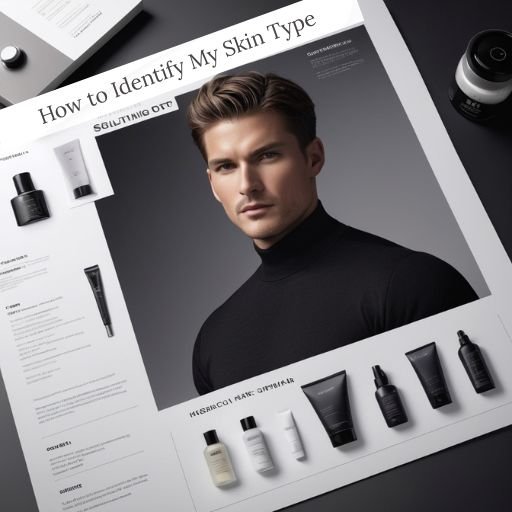✨ Discover Your Skin Type by using How To Identify My Skin Type
About the author :

Hi, I’m Sahil Sheikh, the creator of BrightGlowHub. I built this skin type identification tool to help you understand your skin better — because I’ve personally struggled with finding the right skincare routine that truly works.
After years of testing different methods and learning from dermatologists and trusted skincare sources, I realized that every skincare journey starts with knowing your skin type.
This tool was designed to make that process quick, simple, and accurate — so you can choose the right products confidently.
Disclaimer :
The How To Identify My Skin Type Tool provided on BrightGlowHub is designed solely for educational and informational purposes. The tool aims to help users gain a better understanding of their general skin type (such as oily, dry, combination, or sensitive) based on the answers they provide. Please note that this tool does not serve as a substitute for professional medical or dermatological advice, diagnosis, or treatment.
Skin is highly individual, and many external and internal factors—such as environment, hormones, age, diet, lifestyle, and medical conditions—can affect skin behavior. The results generated by this tool are generalized suggestions and may not reflect every aspect of your skin’s unique needs.
We strongly encourage users to consult with a qualified dermatologist or healthcare professional before making any major decisions about their skincare routine or before starting new treatments, especially if they have existing skin conditions like acne, eczema, rosacea, or hyperpigmentation.
BrightGlowHub does not accept responsibility for any adverse reactions, outcomes, or dissatisfaction resulting from reliance on the tool’s results. By using this tool, you agree that the responsibility for your skincare decisions rests solely with you.
How to Identify My Skin Type: A Complete Guide

Understanding your skin type is the foundation of a healthy and effective skincare routine. Many people invest in expensive products but still struggle with acne, dryness, or irritation simply because they don’t know their actual skin type. If you’ve ever wondered, “how to identify my skin type?” — you’re in the right place
In this guide, you’ll learn:
The different skin types
Simple at-home methods to check your skin type
A free interactive Skin Type Identifier Tool to make the process easier
Why Knowing Your Skin Type Matters
Every skincare product — from cleansers to sunscreens — is designed with a specific skin type in mind. Using the wrong one can:
Worsen acne and breakouts
Cause irritation or redness
Lead to dryness or excess oil
Prevent you from getting the results you want
That’s why the very first step in building your skincare routine is identifying your skin type correctly.

The 5 Main Skin Types

Dermatologists usually classify skin into five categories:
- Normal Skin – Balanced oil and hydration, few imperfections.
- Oily Skin – Excess sebum, shiny appearance, prone to acne.
- Dry Skin – Tight, flaky, or rough patches due to lack of moisture.
- Combination Skin – Oily in the T-zone (forehead, nose, chin) and dry on the cheeks.
- Sensitive Skin – Easily irritated, may sting, burn, or turn red when using certain products.
How To Identify Your Skin Type, According To a Dermatologist
Dermatologists usually classify skin into five categories:
- Normal Skin – Balanced oil and hydration, few imperfections.
- Oily Skin – Excess sebum, shiny appearance, prone to acne.
- Dry Skin – Tight, flaky, or rough patches due to lack of moisture.
- Combination Skin – Oily in the T-zone (forehead, nose, chin) and dry on the cheeks.
- Sensitive Skin – Easily irritated, may sting, burn, or turn red when using certain products.
Quick At-Home Methods to Identify Your Skin Type
1. The Bare-Face Test
Wash your face with a gentle cleanser and pat it dry.
Don’t apply anything for 30–60 minutes.
Observe how your skin feels:
Tight or flaky → Dry
Shiny all over → Oily
Shiny T-zone, dry cheeks → Combination
No major changes → Normal
2. The Blotting Sheet Test
Gently press a blotting paper on different parts of your face.
Hold it up to the light:
Little to no oil → Dry
Oil in the T-zone only → Combination
Oil all over → Oily
Minimal oil, balanced look → Normal
Try Our Free Skin Type Identifier Tool
Still unsure? We’ve built an easy, dermatologist-inspired tool that helps you identify your skin type in just six simple steps.
👉 [Use the Skin Type Identification Tool]
This tool will:
Guide you through a set of quick, interactive questions
Analyze your answers
Tell you whether your skin is dry, oily, normal, combination, or sensitive
Provide tailored tips for your skin type
How to Care for Each Skin Type
Once you’ve identified your skin type, here’s how you can start caring for it:
Normal Skin – Maintain with a balanced routine and sunscreen.
Oily Skin – Use gel-based cleansers, non-comedogenic moisturizers, and oil-free sunscreen.
Dry Skin – Focus on hydrating cleansers, rich moisturizers, and avoid harsh exfoliation.
Combination Skin – Balance with lightweight products for oily areas and hydration for dry patches.
Sensitive Skin – Stick to fragrance-free, gentle formulas and always patch test.
Final Thoughts
Knowing your skin type answers the big question: “how to identify my skin type?” Once you understand your skin’s unique needs, you can pick the right products and avoid unnecessary irritation.
Don’t guess — take the Skin Type Identification Tool and start your skincare journey on the right path.